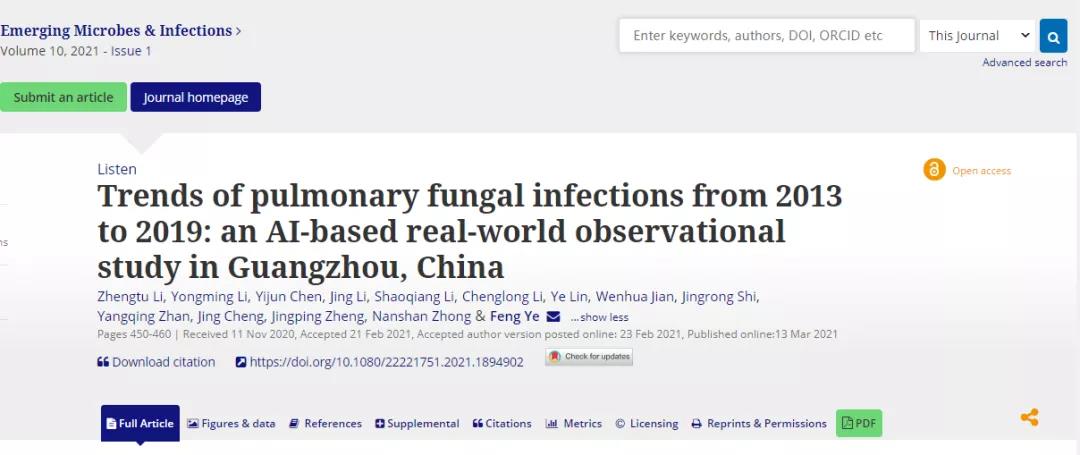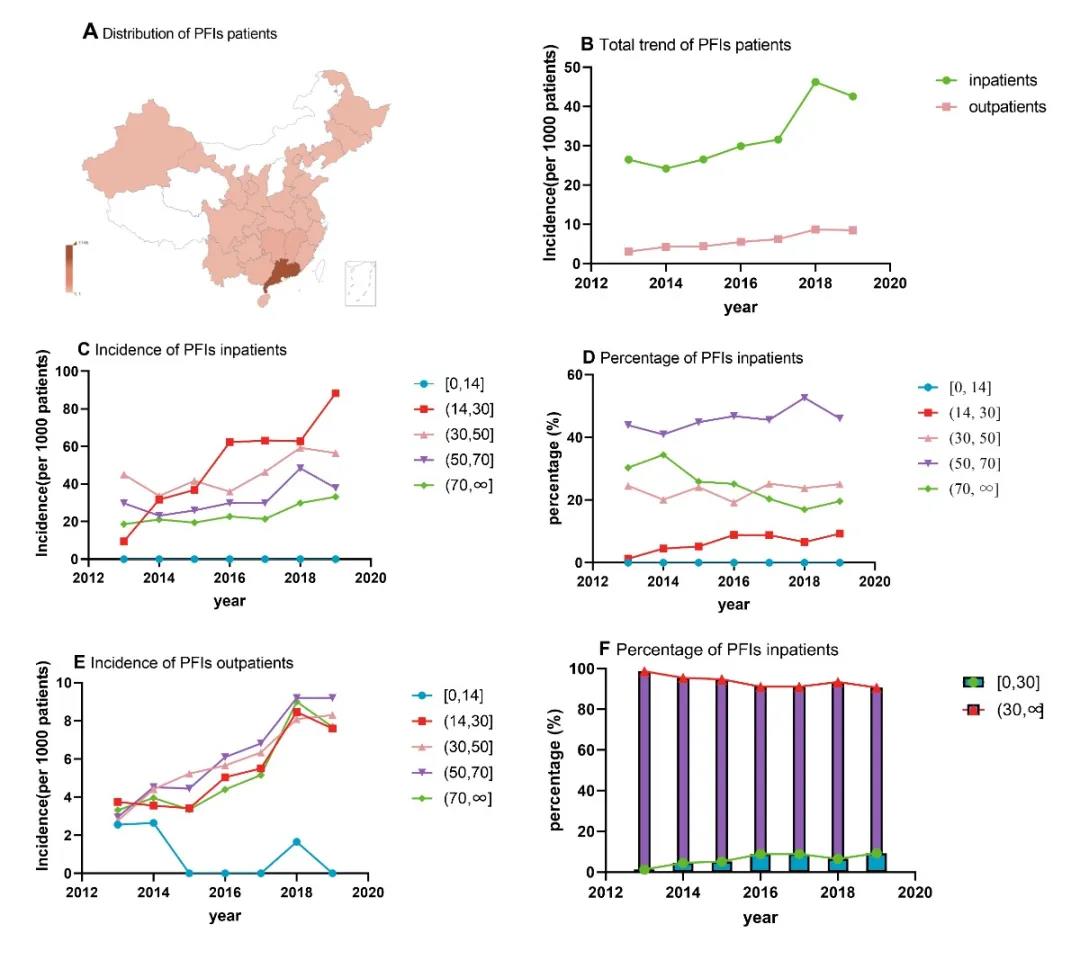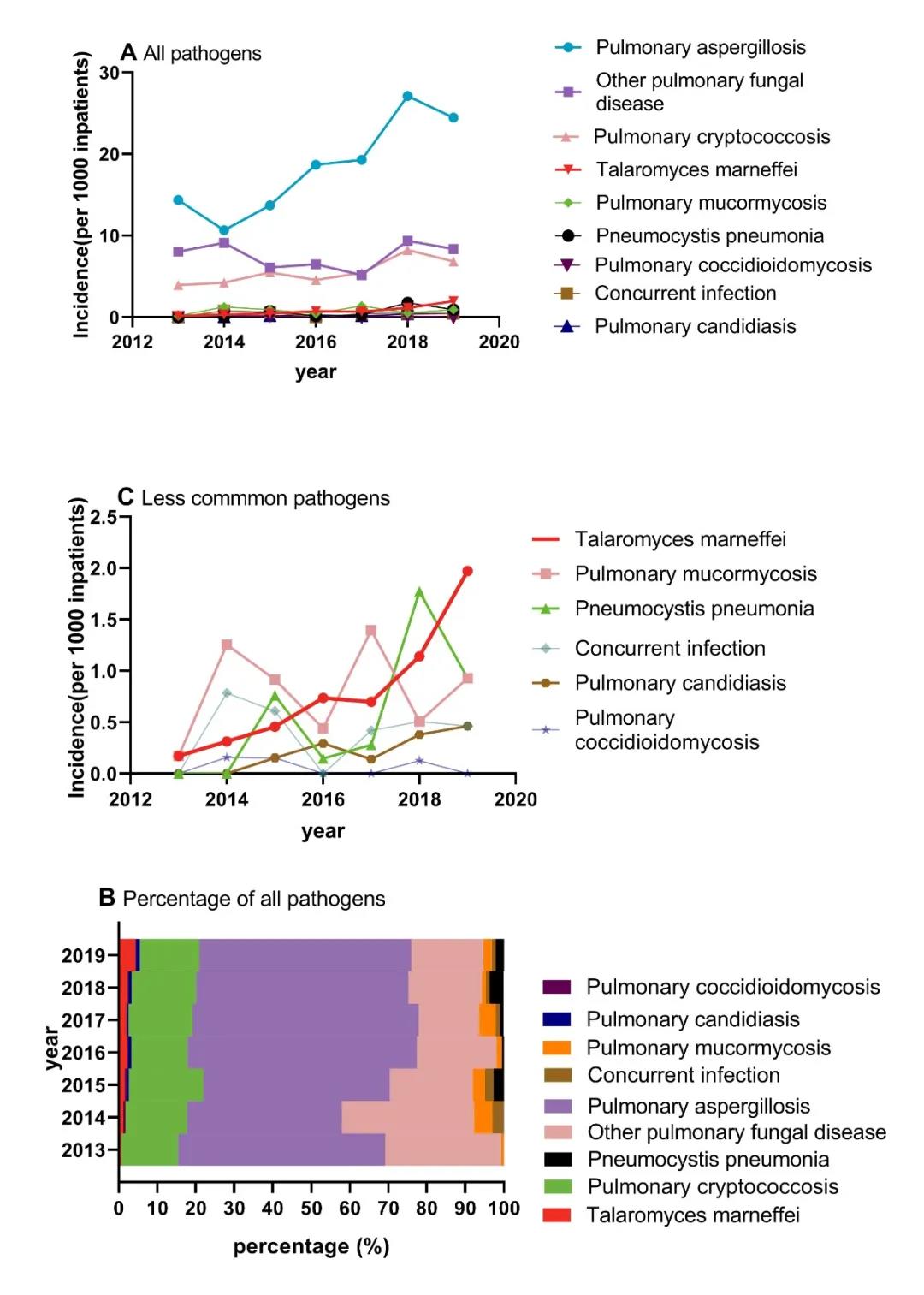New Changes Appear in the Trends of Pulmonary Fungal Infections, New Progress Published by the Lab
2021-04-18992With the widespread use of antibiotics, glucocorticoids and immunosuppressive agents, as well as the increasing number of immunocompromised patients (such as cancer and HIV patients), the incidence of pulmonary fungal infections has also increased year by year. Pulmonary fungal infections used to mainly occur in HIV and other immunocompromised patients, but more and more studies show that patients without traditional risk factors will also be affected. Recently, more and more evidence show that the risk factors and basic clinical characteristics related to aspergillosis, cryptococcosis and talaromycosis marneffei have changed. However, for pulmonary fungal infection, risk factors and epidemiological characteristics remain uncertain. As a result, it is urgent to provide big data in this field, so that we can have a deeper understanding of pulmonary fungal infections and to guide clinicians in the diagnosis, treatment and management of pulmonary fungal infections.
On April 3, 2021, with the Lab as the first research unit, and associate professor PI Ye Feng from the Lab as the corresponding author, a paper entitled Trends of pulmonary fungal infections from 2013 to 2019: an AI-based real-world observational study in Guangzhou, China was published in Emerging Microbes & Infections (District 2, IF 5.77). The study uses artificial intelligence (AI) to extract and analyze data, describing the trends of pulmonary fungal infections in recent years.

In the medical field, artificial intelligence (AI) has become a potentially powerful tool for mining electronic health records to help diagnose and manage diseases. Compared to traditional methods, AI is faster, more simple, and more accurate when processing large amounts of medical data. In this study, the researchers extracted and analyzed data based on AI technology, and found that pulmonary fungal infections have occurred to younger people in recent years and the incidence of rare diseases has increased year by year.

Figure 1 The distribution of patients with pulmonary fungal infections and the trend of the incidence of each age

Figure 2 Analysis of the distribution trend of pathogenic bacteria in patients with pulmonary fungal infections
The co-first authors of this paper is Dr. Li Zhengtu, Master Li Yongming, and Master Chen Yijun from the Laboratory. The corresponding author is Associate Professor PI Ye Feng from the Laboratory. The first unit of the paper is the State Key Laboratory of Respiratory Disease/National Clinical Research Center for Respiratory Disease/Guangzhou Institute of Respiratory Health/the First Affiliated Hospital of Guangzhou Medical University/National Research Center for Respiratory Health. Meanwhile, we also established a research team with Guangzhou Tianpeng Technology to carry out these studies. We hope that these AI-based research results can better help clinicians understand the trends of pulmonary fungal infections in recent years, and provide new basis and direction for the diagnosis, treatment and management of pulmonary fungal infections.
















